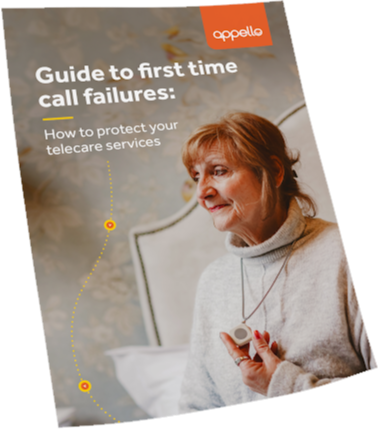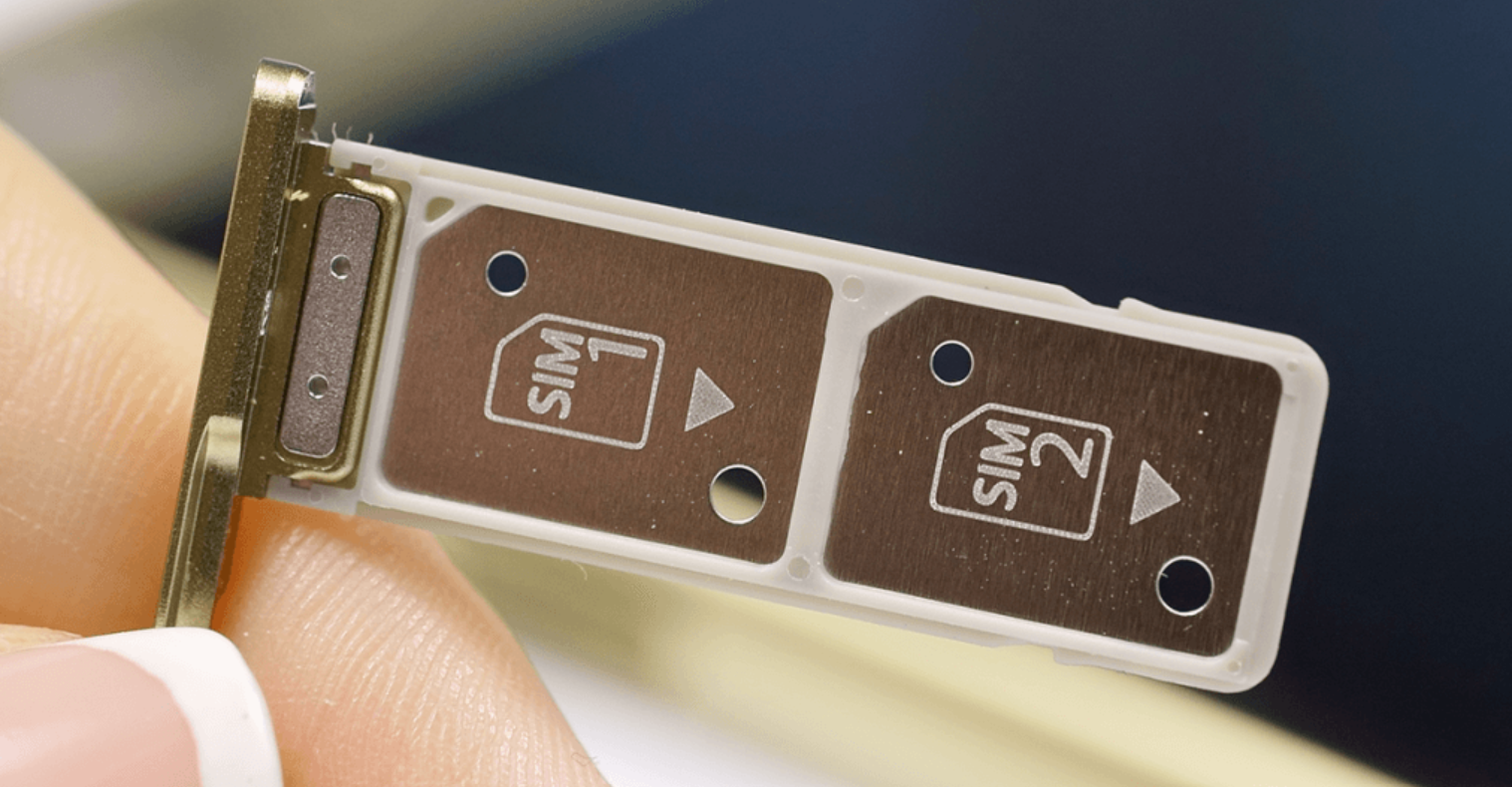When considering your next dispersed telecare alarm, two SIMs are better than one…
With digital becoming the industry standard, dual SIM is going to be an important safety feature for delivering reliable and safe services to your customers. But what does dual SIM mean and why is this beneficial?
This is exciting news however the industry has seen little action on this statement, until now…
Dual SIM acts as a further safety net within digital dispersed telecare alarms, giving added peace of mind.
In a nutshell, this means a second SIM card is included within the device, which provides a fail-safe option if the primary SIM is unable to establish a connection. Dual SIM improves mobile connectivity and resilience – essentially a ‘belt and braces’ feature to help ensure your customers can connect to an operator quickly.
The role of the SIM in telecare devices
Digital dispersed alarms often include a SIM card as this allows the alarm to connect to the Alarm Receiving Centre (ARC) via the mobile network. This may be used as either the primary communication method or as a secondary, back-up option.
You can be confident mobile connectivity offers a reliable alternative method for sending an alarm call to the ARC. It’s used for those who don’t have a landline, or who don’t want to rely on their broadband connection, perhaps due to poor coverage. In addition, because digital phone lines require power to work, a mobile connection is also suitable as a contingency method in the event of a power or Wi-Fi outage.
As the TEC Services Association (TSA) states in its mobile communications guidance: “Properly applied, digital mobile networks for telecare use offer excellent reliability for voice and data.”
Dual SIM in telecare – why are two SIMs better than one?
Your customers want to know they can reach help as quickly as possible if they need to make an alarm call. Your digital telecare system should therefore provide several connection pathways to the Alarm Receiving Centre. This could include the mobile network, Ethernet or Wi-Fi connections.
Whether the mobile network is the primary communication method or the back-up option, it’s essential to address potential connection issues.
Ofcom’s Connected Nations reports give an overview of the UK’s mobile connectivity, which is now generally at a high level for many. But there are areas of the country with varying levels of coverage. There can also be temporary glitches with mobile network connections due to heavy usage. This isn’t usually a problem for personal mobile phone use but can become more significant for vital telecare services.
In fact, research for the NHS Directorate highlighted that housing providers are concerned about the impact of poor mobile coverage, as well as the reliance of digital telephone lines on mains power.
Dual SIM offers a solution to these concerns. With two SIM cards in your digital dispersed alarm, there is a second route if there are any problems connecting via the primary SIM. This gives you the confidence of a ‘belt and braces’ approach, offering the highest levels of connectivity for even greater resilience and reliability.
What to look for in a dual SIM telecare device
We see dual SIM becoming a standard feature of digital dispersed alarms. We’ve launched our own dual SIM telecare device, SmartLife, with a number of key safety factors in mind:
4G capability
The 4G network provides the fastest, most reliable mobile connection. It’s essential to ensure digital dispersed alarms have 4G compatibility as mobile providers are sunsetting the 3G network. However, 2G will remain in place as this offers a baseline connectivity, generally offering better coverage in rural areas.
SmartLife prioritises a 4G connection. While other devices default to 2G once they have connected to this, SmartLife will always attempt to connect via 4G first. In addition, each of the SIM cards is associated with a different high quality core mobile network operator for greater resilience.
Roaming SIM
Telecare devices must have roaming SIMs, which provide access to all the mobile networks to ensure reliable connection and coverage.
SmartLife uses a clever algorithm to determine the best local network to connect with, delivering reliable and uninterrupted coverage, even in areas with poor network connectivity.
Multiple connectivity options
It’s important to avoid a single point of failure by ensuring your digital telecare devices offer different routes for connecting to the Alarm Receiving Centre.
SmartLife has multiple connectivity options. Unlike similar devices, this offers a fixed line connection via both Wi-Fi or Ethernet, as well as mobile connection via SIM, with the added peace of mind of dual SIM.
Ability to test
You want to know your contingency options work as expected in the event of a problem. SmartLife is unique in allowing easy testing of the dual SIM feature: by removing the primary SIM, the device enables an alarm to be activated via the secondary SIM so you can ensure everything is in order.
No extra SIM charges
Research shows SIM card costs are a key factor for many housing providers as they assess potential digital telecare solutions. SmartLife includes the second SIM card with no extra costs to budget for.
Dual SIM is the next step for dispersed digital telecare alarms
The bottom line is two SIMs are better than one when it comes to delivering a robust digital telecare service your customers can rely on.
We’re proud to launch SmartLife , the next generation of our ground-breaking digital dispersed alarm, featuring the added benefit of dual SIM for even greater resilience and reliability.
Find out more about SmartLife here or contact us to discuss your requirements.
Frequently asked questions about dual SIM
Why is dual SIM important in digital telecare?
Dual SIM offers a fail-safe option for digital dispersed alarms with mobile connectivity. This provides a secondary SIM card that connects to the Alarm Receiving Centre in the event of any issues with the primary SIM connection. This ‘belt and braces’ feature delivers a very high service standard for added peace of mind.
What is the SmartLife DUAL?
SmartLife is the latest model of Appello’s digital dispersed alarm, offering the reassurance of compatibility with the UK’s digital telecoms network. It provides multiple connectivity options, including fixed line and dual SIM, to enable faster connections and mitigate the risk of first-time call failures. SmartLife also features ground-breaking interoperability, working with peripheral devices such as door or bed sensors from multiple manufacturers.
What features should you look for in a dual SIM telecare device?
Appello’s SmartLife has been developed to include key safety features for a telecare service your customers can rely on, such as:
- 4G prioritisation – unlike alternative dual SIM alarms, SmartLife will always attempt to connect via 4G first rather than defaulting to 2G.
- Unique Dual SIM testing ability: this gives you confidence that the failover connectivity is ready for use in the event of an outage. Testing is easily undertaken by removing the primary SIM, which then enables an alarm to be activated via the secondary SIM.
- Ethernet or Wi-Fi back-up: SmartLife offers both Ethernet and Wi-Fi connectivity to deliver a digital connection if SIM connectivity is lost.
Find out more about SmartLife here or contact us to discuss your requirements.
You can find more details on the issue of first time call failures in our latest guide, which is available to download now

Talk to us to discuss your requirements and find out about our cost-effective and future proof digital solutions.

.png?width=700&name=Blog%20Thumbnails%20(5).png)

